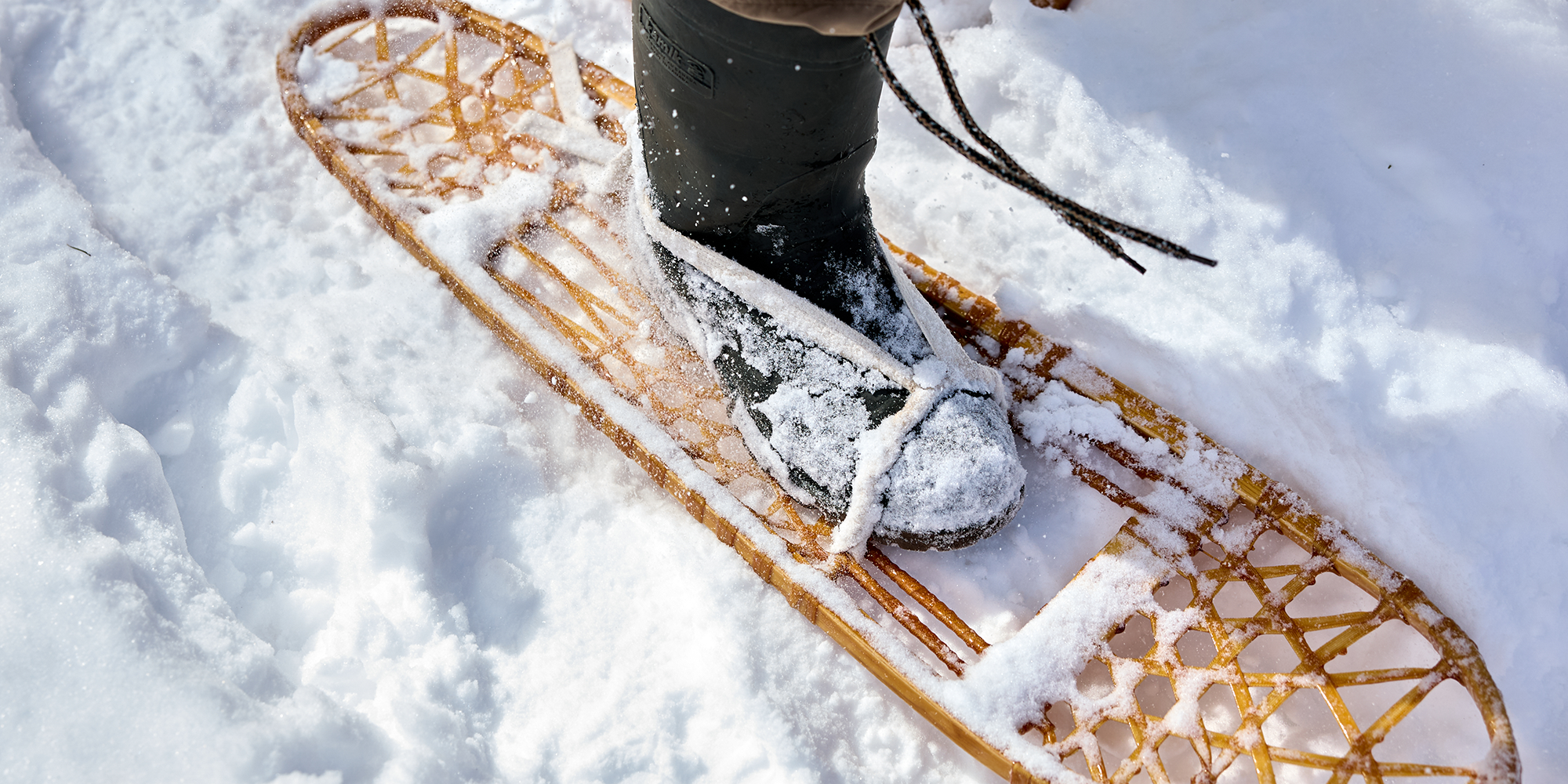How Do Snowshoes Float On Snow? Wooden Snowshoes & the Quiet Science of the Float
The Best Snowshoes May Not Be What You Think
There’s something almost mystical about walking across deep snow without sinking. It feels like defying gravity, like stepping into a winter dream. But the truth behind this magic is rooted in physics, and in the timeless design of the snowshoe.
We’ve spent decades immersed in the science and art of winter travel. And while modern materials have their place, there’s a reason we still reach for traditional wooden snowshoes when the snow gets deep and the woods get quiet.

Surface Area: The Secret to Floating
The principle behind snowshoes is simple: increase the surface area underfoot to distribute your weight more evenly across the snow. Without snowshoes, your boots concentrate your body weight into a small footprint, causing you to sink up to your knees or hips in powder. Snowshoes spread that same weight over a much larger area, reducing pressure per square inch and allowing you to “float” on top.
Wooden snowshoes excel at this. Their long, wide frames are often shaped in classic styles like the Ojibwa or Alaskan. These shapes offer generous surface area, especially compared to compact aluminum or plastic models. That extra length and width make a real difference in deep, soft snow, where flotation is everything.
Are Wooden Snowshoes Quiet by Design?
Flotation isn’t the only reason we love wooden snowshoes. There’s also the quiet.
Modern snowshoes, with their metal frames and synthetic decking, tend to creak and crunch in cold temperatures when plastics stiffen and bindings squeak. Wooden snowshoes, by contrast, move with a whisper. Their lacing flexes naturally with each step, and their wooden frames absorb sound rather than amplify it.
In the hush of a northern forest, that silence matters. Whether you’re tracking wildlife, exploring a frozen lake, or simply soaking in the solitude, wooden snowshoes let you move through winter without disturbing it.

Tradition Meets Engineering
The science of snowshoeing isn’t new. Indigenous peoples across North America developed snowshoes thousands of years ago, adapting their designs to suit local terrain and snow conditions. The wide, rounded “bear paw” style was ideal for dense forests, while the long, narrow “Alaskan” style worked best in open country. These designs weren’t just practical, they were elegant solutions to a complex problem.
Today’s wooden snowshoes carry that legacy forward. They’re crafted with precision, often using ash wood for its strength and flexibility, and rawhide or neoprene lacing for durability. At Northern Toboggan, we pair these traditional designs with modern bindings for comfort and control, creating a hybrid that honors the past while embracing the present.
Wooden Snowshoes, The Feel Beneath Your Feet
There’s also something intangible about wooden snowshoes—something you feel with each step. They flex gently underfoot, responding to the terrain in a way that rigid metal frames can’t. They glide over powder, skim across crust, and settle softly into packed trails. It’s a more organic experience, one that connects you to the snow rather than just letting you walk on it.
And let’s be honest: they look beautiful. There’s a craftsmanship to wooden snowshoes that speaks to the soul—curved frames, hand-laced webbing, and a patina that deepens with each season. They’re not just gear; they’re companions.

Choosing the Right Pair of Wooden Snowshoes
If you’re new to snowshoeing, or if you’ve only tried modern models, consider giving wooden snowshoes a try. Look for a style that matches your terrain. A longer style for open areas, shorter or pointed for wooded trails. Make sure the bindings fit your boots snugly, and don’t be afraid to ask questions. We love helping folks find the right fit.
Because in the end, snowshoeing isn’t just about getting from point A to point B. It’s about how you move through winter; quietly, gracefully, and with a sense of wonder.

